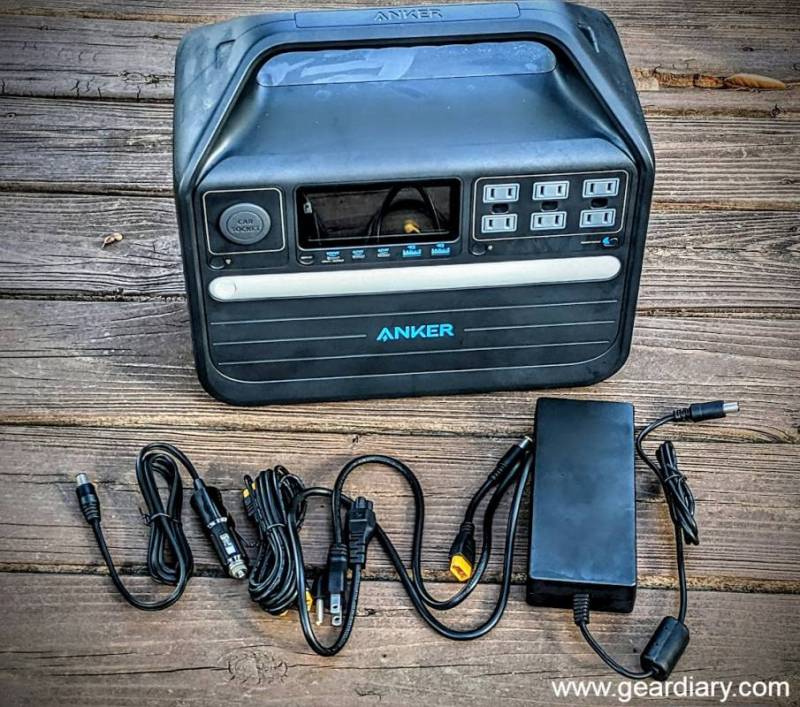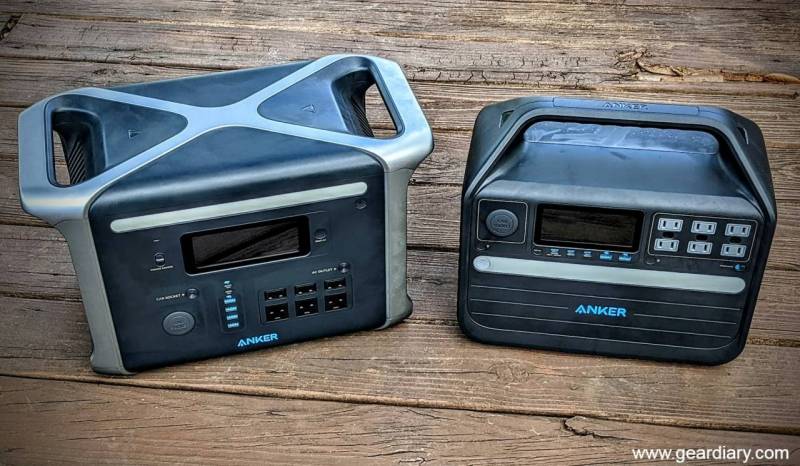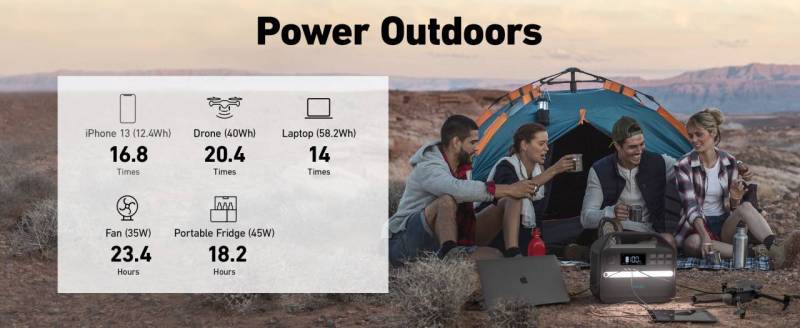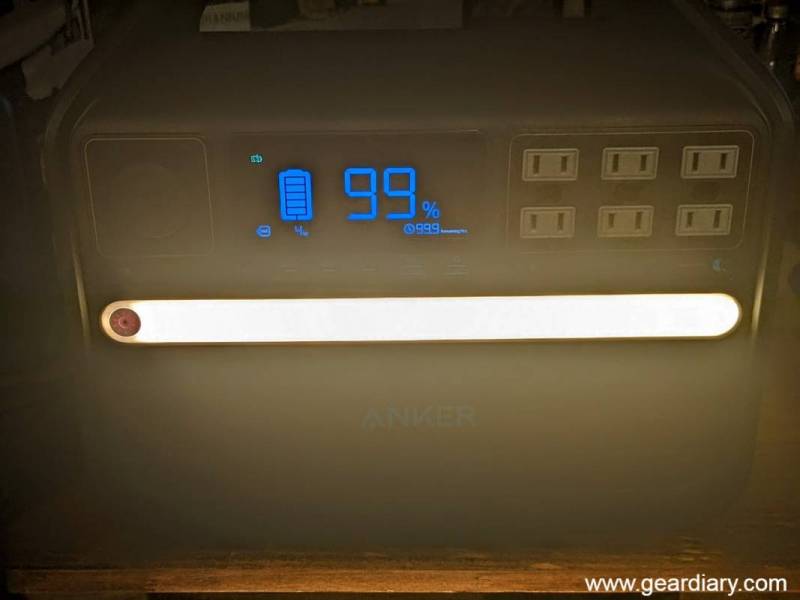The Lowdown
If you are searching for a large capacity battery full of features in a compact and light form factor, the Anker 555 PowerHouse is a perfect option; it is well designed and packed with features.
Overall
Pros
- Small form factor considering the amount of power
- Plenty of charging ports
- Accepts up to 200W of solar input
- Power-saving mode conserves battery power and minimizes drainage
Cons
- The trade-off for the Anker 555 PowerHouse’s smaller size is the necessity for a power brick on the charging cable
We recently reviewed the Anker 757 PowerHouse, a large 1229Wh portable power station. As you can see in the review, it is an amazing product, but it is a heavy power source that might not always be the best option. The Anker 555 PowerHouse brings some amazing specs in a smaller form factor. Let’s take a look.
The Anker 555 PowerHouse weighs 29.9 pounds and provides 1024Wh with 1000W output. The next-gen LiFePO4 batteries in the PowerHouse are expected to last 6 times longer than standard lithium-ion batteries. Rather than two or so years, Anker says that the 555 should last ten years; it also comes with an exclusive 5-year full device warranty.
Measuring 13.78 x 7.4 x 11.61, the 555 PowerHouse is super portable for the amount of power it holds. The package includes the portable battery, AC charging cable, car charging cable, and solar connector.
The 555 PowerHouse is the little brother of the PowerHouse 757 that I recently reviewed. Perfect for occasions when you don’t need all of the power that the 757 supplies, the 555 has a smaller footprint, and it’s ideal for someone who needs a lighter and easier to carry option.
One thing you can see that’s different is the 555’s charger has a large power brick. I prefer no brick, but that adds size and weight to the battery’s case. Using a brick, in this case, allows the PowerHouse to be smaller and lighter, making it much more portable. As a result, the Anker 555 PowerHouse is compact in comparison to the battery size and performance it produces.
Charging can be done through the power cord, car charger (using the provided adapter), solar (using the supplied adapter), and USB C. The solar adapter will connect to most portable solar panels, including the Anker 625 100w panel. No USB C cable is provided, but I have plenty lying around.
As you can see below, the port used for charging is labeled.
The Anker 555 PowerHouse provides plenty of ports and plugs to power your devices. There are six AC outlets, two USB-A ports, three USB-C ports, and a DC car socket which should provide plenty of options while camping or the outdoors.
What kinds of things can you power with the Anker 555 PowerHouse, and for how long? Anker says you can expect the following:
The bright and crisp display shows all the necessary information to help manage the power station’s power level and what is being used.
The Anker 555 PowerHouse’s front panel also includes an LED light which is great for plugging in items in the dark or providing light when using it in a tent or on a picnic table. Two flashing options are available if you hold down the power button.
The Anker 555 PowerHouse has an easy-to-use power-saving mode that conserves battery power and minimizes drainage when the AC and car socket control buttons are turned on, and nothing is plugged in; it’s a small switch on the bottom right of the AC plugs.
When the AC and car socket control buttons are turned on, there will be a certain amount of no-load power consumption. To avoid this, make sure the control buttons are turned off or turn on Power Saving mode when not in use.
If you are searching for a large capacity battery full of features in a compact and light form factor, the Anker 555 PowerHouse is a perfect option; it is well designed and packed with features.
I love the 555’s compact size for taking out to the pool or camping while camping. This much power in a smaller form factor calls for adding a power brick on the charger, but the trade-off is a much easier battery to carry and store.
The 1024Wh of capacity and 1000W of output should be plenty to get you through a weekend camping or doing other outdoor activities; if you’re off-grid and need the battery to last much longer, you can add up to 200W of solar.
The Anker 555 PowerHouse retails for $1,099; it is available directly from the manufacturer and Amazon.
Source: Manufacturer supplied review sample
What I Like: Small form factor considering the amount of power; Plenty of charging ports; Accepts up to 200W of solar input; Power-saving mode conserves battery power and minimizes drainage
What Needs Improvement: The trade-off for the Anker 555 PowerHouse’s smaller size is the necessity for a power brick on the charging cable









